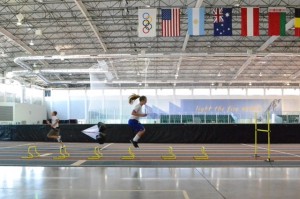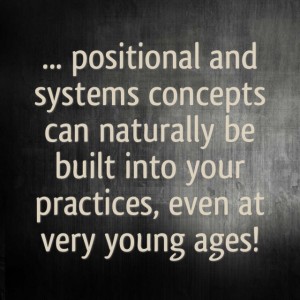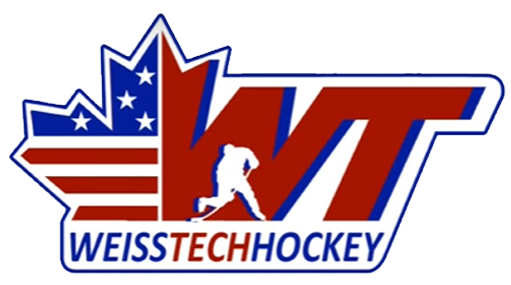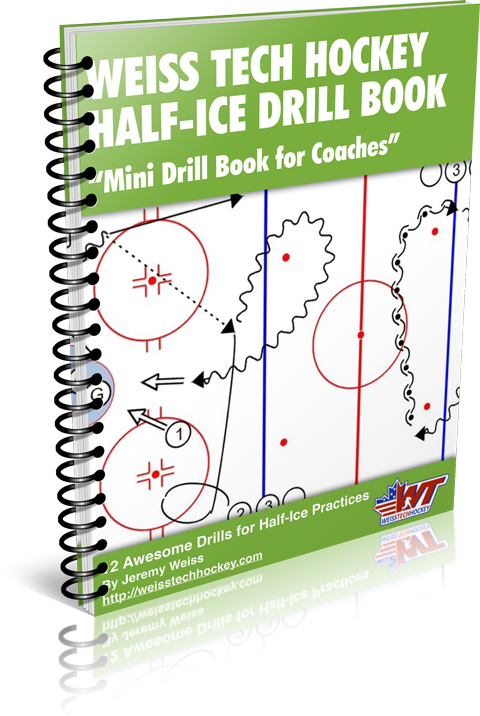The Ice “Crisis:”
It’s no secret that there’s a shortage of ice in a lot of hockey towns. Different organizations have tried to address this problem in different ways… with some outcomes working out better than others. Many organizations run half-ice practices, with two teams sharing the ice. Other programs are running “station practices,” with 50-60 players rotating through various stations. Some programs are still using the “old-fashioned” method of full-ice practices, with one team on the ice at a time. I believe most organizations are using some combination of the scheduling methods above.
The purpose of this article isn’t to critique the various “ice accommodation strategies” that have been tried over the years, nor is it to attempt to solve the world’s ice scheduling issues (although that might be another topic for another day). What I’m looking to accomplish here, is to set forth a philosophy that you can use with your team, regardless of the stance your organization has adopted.
Making Wise Use of Your Ice Sessions:
There are endless philosophies and opinions on how hockey players should be developed, what types of skills should be taught, and at what age the various skills and concepts should be introduced. I have my opinions, and I’m sure you have yours! Regardless of your school of thought, one simple development strategy holds true… teams MUST make the most of their ice time, especially when ice is as scarce and expensive as it is today!
Here are a few tips I recommend:
 1. Take it Outside! Lots of stuff can be worked on off the ice, away from the rink. An obvious one is conditioning. It kills me to use precious ice time for skating ladders! If players, coaches, and teams all got on board to consistently execute a well-designed, hockey-specific workout program, both during the off-season and in-season, then conditioning wouldn’t need to be addressed in practice.
1. Take it Outside! Lots of stuff can be worked on off the ice, away from the rink. An obvious one is conditioning. It kills me to use precious ice time for skating ladders! If players, coaches, and teams all got on board to consistently execute a well-designed, hockey-specific workout program, both during the off-season and in-season, then conditioning wouldn’t need to be addressed in practice.
Check out our free, 3-Part video series on Off-Ice Training for Hockey.
2. Off-Ice Skills Sessions: Conditioning isn’t the only thing that can be developed away from the rink. Many teams are holding off-ice skills sessions to supplement their on-ice practices. Modern advances in off-ice training aids have made the experience much more realistic for players looking to develop their stickhandling, deking, shooting, passing, and even some aspects of skating. Getting set up to hold off-ice skills sessions takes a bit of financial investment up front, but the return on investment in the long run can be HUGE. Here are some examples of off-ice training sessions we’ve run:
Visit our friends at HockeyShot to start collecting your off-ice training aids.
3. On-Ice-Specific Development: On the flip side, there are some skills that can only be developed on the ice. Skating technique, agility, passing in motion, 1 on 1’s, 2 on 1’s and other battling tactics all fall into this category. Positional play and systems work are also tactics that must be developed on the ice. Stuff that can’t be worked on OFF the ice, should be highly stressed ON the ice!
4. Homework Assignments: Another place a lot of practice time is wasted is at the whiteboard, while drills are being explained. I know a lot of coaches who assign homework before practices. Usually these are web links to video diagrams, animations, or demonstrations of new drills. There may still need to be a quick explanation, but if the player has done his/her homework, there learning curve is significantly reduced.
Many coaches have used the videos in our Coaches’ Training Course as homework for their players.
5. Core Drills: I also recommend having a core set of 10-15 drills you use on a regular basis. Players will begin to memorize these drills, and know them by name. You’ll eventually be able to just call out the drill, and players will get themselves set up without needing the explanation again. This tactic can help keep practices running smoothly, and it also reinforces the concept of perfecting drills and skill sets.
6. Coach’s Preparation: Anyone who knows me, knows I’m a HUGE believer in planning every single practice. Keeping your thoughts organized on the ice is extremely important to running a smooth practice. In my opinion, the best way to keep yourself, and your practice organized is with a computerized diagrammer/practice planner. The two I use (and recommend) are DrillDraw and HockeyShare. Both are phenomenal!
 It doesn’t have to be “either/or…”
It doesn’t have to be “either/or…”
Lastly, many coaches and administrators have the mistaken belief that systems play shouldn’t be taught too early, because it detracts from skill development. This can be true if you LET it be true, but I believe it doesn’t have to be an “either/or” proposition. If you make proper use of your team sessions, both on and off the ice, and develop individual and team skills in the proper order, then positional and systems concepts can naturally be built into your practices, even at very young ages!
As players begin to learn the recurring patterns of the game, because of well-structured practice sessions, they will begin to see the play better, and react more quickly when those same patterns present themselves in real games. It can be done, and you’re the one who can do it! Check out our playbook for more information on developing systems hockey at young ages.
What have we missed?
Are there any on-ice productivity tips you’re using that we didn’t mention here? Leave your tips in the comments below!
![]()





Hoping you don’t mind but I’m going to share this over at IHD as well.
Absolutely! Feel free 🙂
Great article ! Will share for sure…
Thanks
S.
Thanks Steve! Appreciate the share